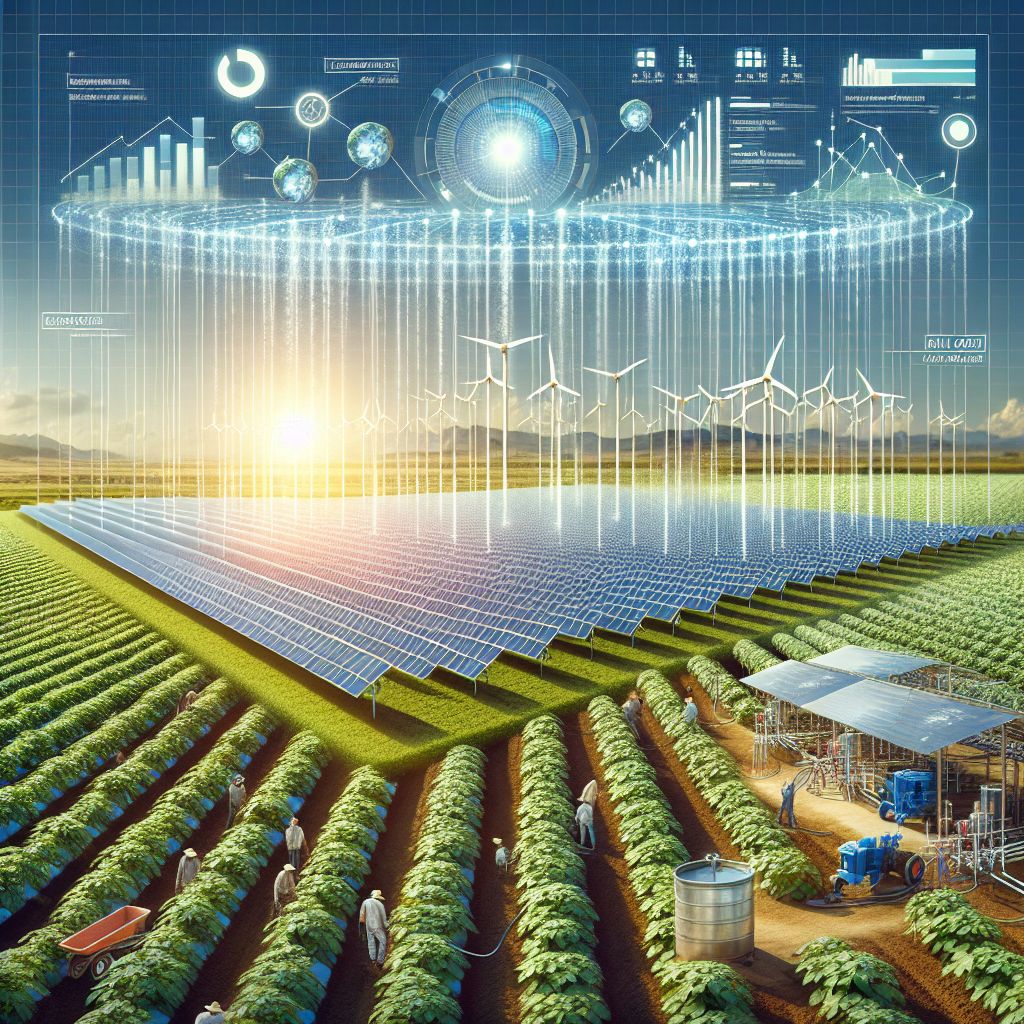
Main Points
Solar irrigation can significantly lower energy expenses for commercial farming operations.
Initial costs in solar irrigation systems are balanced by long-term savings and potential government incentives.
Using solar power for irrigation is not only cost-effective but also environmentally sustainable.
Planning and implementing a solar irrigation system requires careful consideration of farm size, water needs, and local climate.
Real-world examples demonstrate how solar irrigation leads to increased efficiency and profitability in commercial farming.
Commercial Farming with a Solar Irrigation System
Imagine a farm where the sun’s energy not only grows crops but also powers the systems that water them. That’s the reality for a growing number of commercial farms that are turning to solar irrigation systems. These systems are not just a nod to sustainability; they are smart economics. In this article, we’ll explore how using solar energy for irrigation can make a significant financial difference in commercial farming.
Defining Commercial Farming
Before we dive in, let’s clarify what we mean by commercial farming. This refers to the mass production of crops and livestock for sale. It’s all about maximizing efficiency and production, since profit margins can be quite slim. This is where solar irrigation comes in—it can lower operating costs and give commercial farms a competitive advantage.
What Are the Economic Benefits of a Solar Irrigation System for a Commercial Farm?
Let’s turn our attention to the sun and savings. Solar irrigation systems use photovoltaic panels to harness the power of the sun and convert it into electricity. This electricity is then used to power pumps that supply water to crops. So, why is this an economical choice? Because after the initial setup costs, the energy to power your irrigation comes at a significantly lower cost—free sunlight.
Right below is a table showing you the economic benefits of a solar irrigation system for a commercial farm:
|
Benefit |
Description |
|---|---|
|
Reduced Energy Costs |
Solar irrigation systems eliminate the need to rely on the electricity grid or diesel generators, which can have high and unpredictable energy costs. Solar power provides a reliable, low-cost source of energy to power irrigation pumps and other farm equipment. 1, 2, 3, 4 |
|
Increased Profitability |
The savings from reduced energy costs can significantly improve a farm’s profitability, especially for large-scale commercial operations with high energy demands. 1, 2, 5 |
|
Energy Independence |
Solar irrigation systems allow farms to generate their own power on-site, making them less dependent on the grid and less vulnerable to power outages or price fluctuations. 1, 3, 5 |
|
Potential Revenue Generation |
Farms with excess solar generation can sell the surplus electricity back to the grid through net metering programs, creating an additional revenue stream. 5 |
|
Improved Crop Yields |
Solar-powered irrigation systems can optimize water usage and provide a reliable water supply, leading to improved crop yields and quality. 3, 4 |
|
Reduced Environmental Impact |
Solar irrigation is a clean, renewable energy source that does not produce greenhouse gas emissions or other pollutants, making it a more sustainable option for agriculture. 1, 2, 3 |
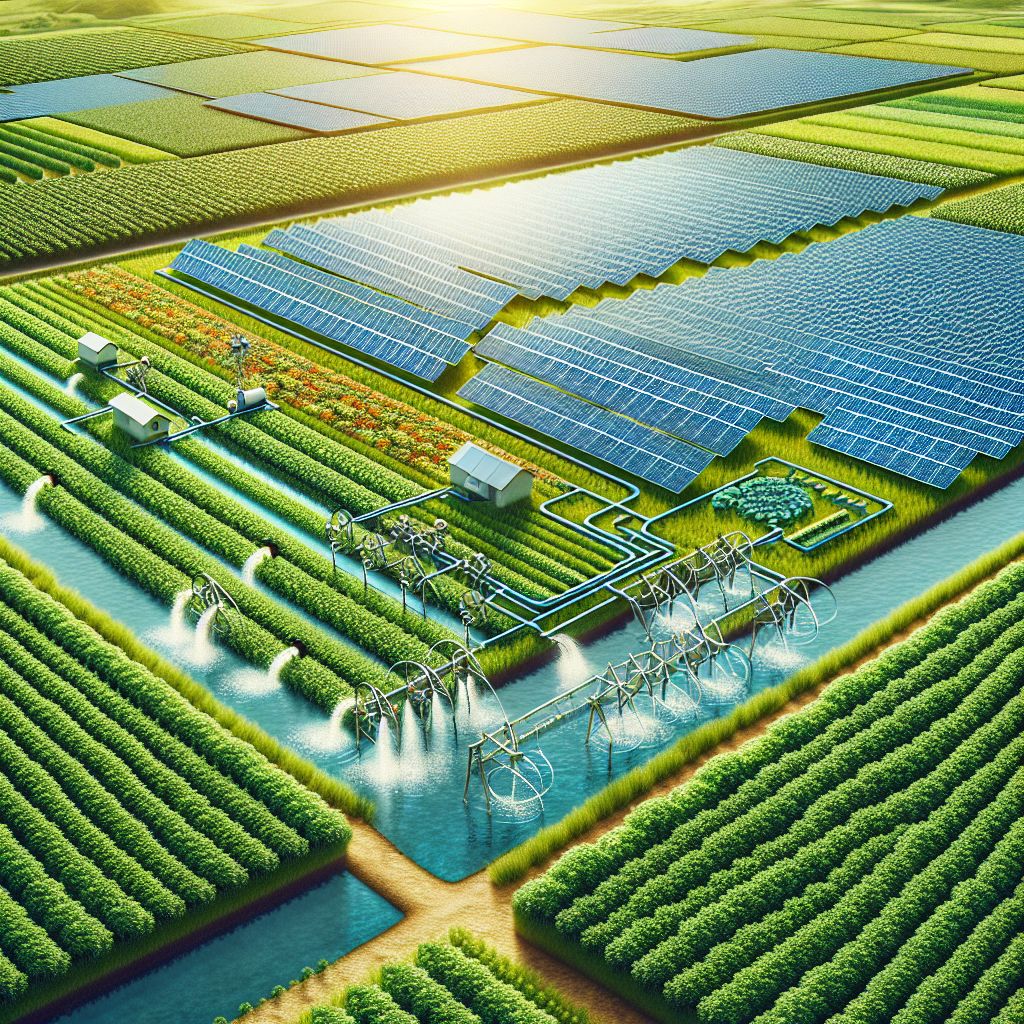
How to Make the Sun Pay for Your Farm
It’s simple. Solar irrigation is the process of transforming sunlight into the lifeblood of your crops—water. And you don’t have to worry about the high cost of energy. By investing in solar panels and efficient irrigation technology, you can secure a future of low-cost water delivery.
Solar panels take advantage of the abundant sunlight.
The sunlight is then converted into electricity to power water pumps.
These pumps then power irrigation systems to deliver water in an efficient manner.
But it’s not just about the savings on energy costs. Efficient use of water can also lead to reduced waste and potentially lower water bills. Additionally, by relying less on the grid, your farm is protected against power outages and the ever-increasing energy prices.
Below is a table outlining the steps to make the sun pay for your farm through solar irrigation:
|
Step |
Description |
Sources |
|---|---|---|
|
#1 Assess Your Needs |
– Determine your water requirements based on crop type, acreage, and growing season | |
|
#2 Choose the Right Solar Irrigation System |
– Select a solar-powered pump that matches your water flow and pressure requirements | |
|
#3 Install the Solar Irrigation System |
– Properly size and position the solar panels to capture maximum sunlight | |
|
#4 Maintain and Monitor the System |
– Regularly clean and inspect the solar panels, pump, and other components | |
|
#5 Enjoy the Benefits |
– Significantly reduce your energy costs and reliance on the grid |
By harnessing the power of the sun, you can cost-effectively water your crops, reduce your carbon footprint, and secure a more sustainable future for your farm.
Initial Investment for Solar Irrigation in Commercial Agriculture
Let’s get down to brass tacks. The initial investment for a solar irrigation system varies greatly based on the scale of your farm and your unique requirements. To give you a rough estimate, a smaller system may start at about $10,000, while larger farms may need to invest $100,000 or more. It’s a hefty upfront cost, but it’s one that will pay dividends in the long run.
Why? Because the cost of solar technology has been dropping, while efficiency has been improving. Plus, with the right setup, you could see energy cost reductions of up to 80%. When you spread that out over the lifespan of your solar panels—which can be 25 years or more—the math starts to look pretty good.
Looking Ahead to Long-Term Savings
So what does the future hold? Once you’ve made the initial investment, the running costs of a solar irrigation system are pretty low. There’s not much maintenance to worry about – just keep the panels clean and the system in good working order. And given the long lifespan of solar panels, you can expect many years – maybe even decades – of lower energy bills.
Furthermore, solar-driven systems can result in enhanced crop yields. Regular and prompt irrigation can stimulate plant growth and result in more plentiful harvests. More crops equate to more sales, which means increased profits. It’s a cycle of savings and income that continues to give.
Green Investment Incentives and Tax Breaks for Commercial Farms
On top of the savings, there’s another upside. Many governments provide incentives for investments in renewable energy. These can take the shape of tax credits, rebates, or grants. For example, in the United States, the federal government provides a tax credit that can cover a substantial percentage of the cost of your solar system.
Additionally, state and local incentives can make a big difference. It’s worth it to do some research or talk to a solar provider who knows the ins and outs. These incentives can greatly decrease your initial costs and reduce the time it takes to recoup your investment.
Keep in mind, solar isn’t just an expense—it’s an investment that brings value to your farm. It’s a concrete move towards sustainability that can also enhance your brand and attract environmentally-aware customers.
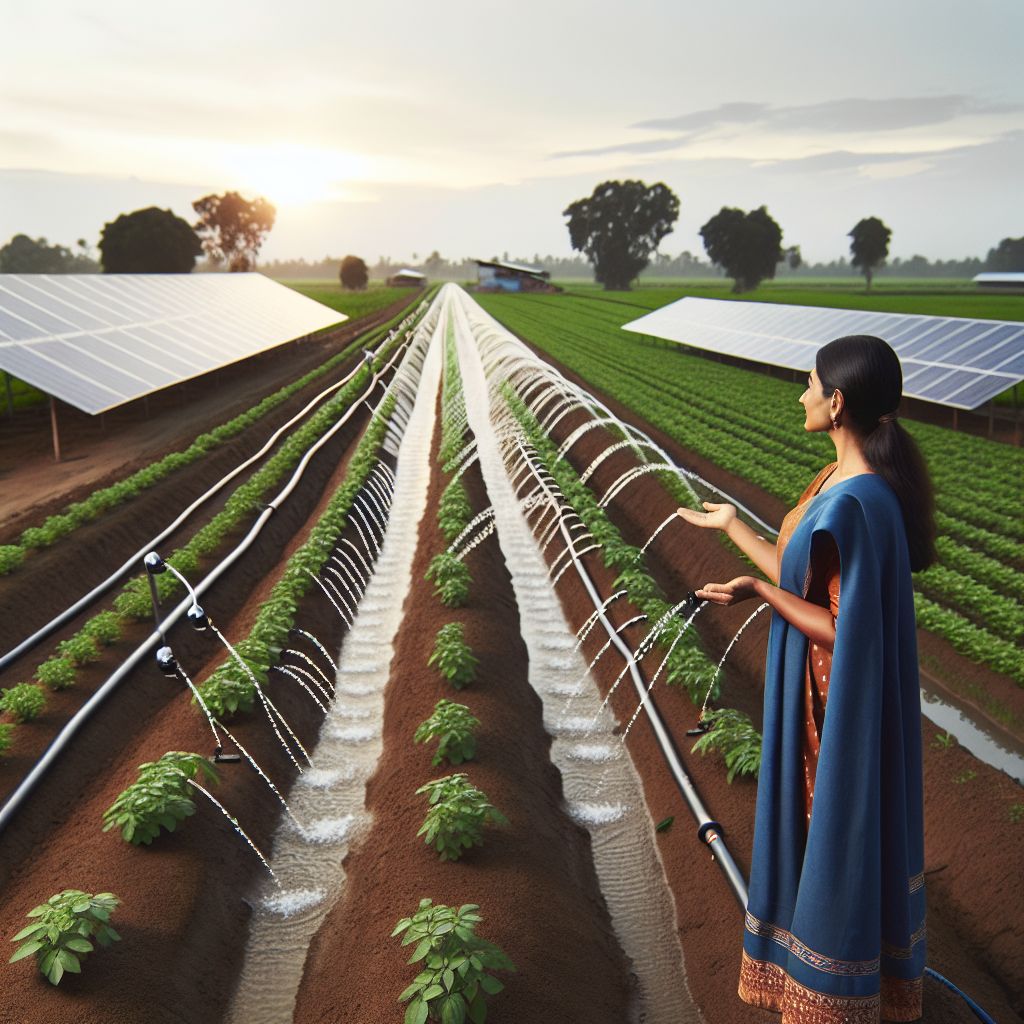
Smart Water Use Can Save Commercial Farmers Money
Water is the backbone of agriculture, but it’s not just about how much you use, but how smartly you use it. Solar irrigation systems give farmers the ability to better manage their water resources, delivering just the right amount of water to their crops at just the right time. This precision saves water – a valuable and often expensive resource, especially in drought-prone areas or areas with high water costs.
Solar Power Boosts Efficiency
Solar irrigation is all about efficiency. By using the sun’s energy, you’re eliminating the need for a utility company and using a clean, unlimited power source. This allows you to operate your irrigation pumps without concern for the variable costs of diesel or electricity. Plus, since solar panels transform sunlight into electricity without any moving parts, they require less maintenance and are less likely to break down than traditional pumps.
Efficient Tech: Solar Pumps with Drip Irrigation Systems
By combining solar panels with the latest in irrigation technology, such as drip irrigation systems, we can increase water efficiency even more. Drip systems deliver water right to the base of the plant, which reduces evaporation and runoff. This targeted approach to watering not only conserves water but also decreases the chance of weed growth and fungal diseases, which can flourish in the wet conditions created by less accurate irrigation methods.
Take, for instance, a farmer in California where water rates are high. They decided to switch to a solar-powered drip irrigation system. The outcome? A 30% reduction in water usage and a yearly saving of thousands of dollars in energy costs. This is a clear win-win for both the farmer’s wallet and the environment.
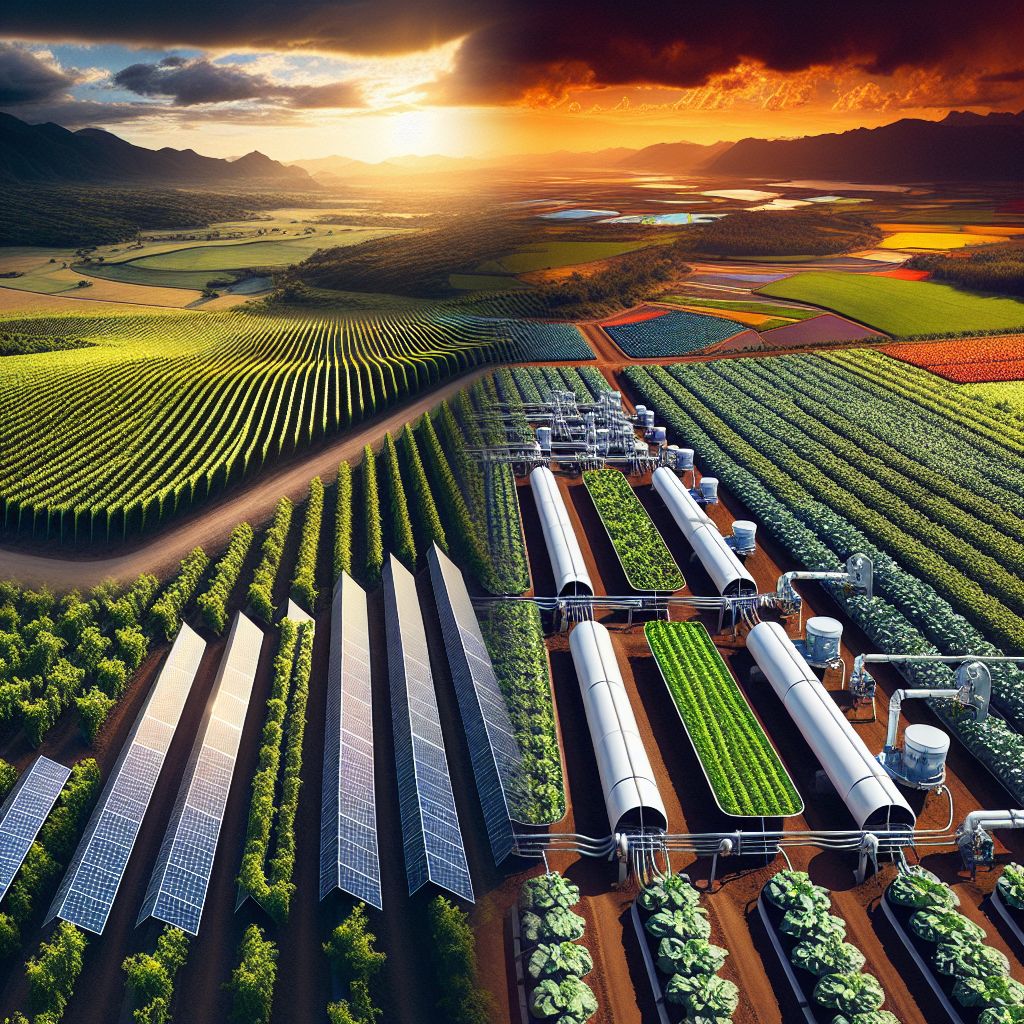
Success Stories: Fields Flourishing with Solar Power
Across the globe, farms are reaping the benefits of switching to solar irrigation. From vineyards in France to vegetable growers in India, the stories are the same: lower costs, better yields, and a smaller carbon footprint.
Not only individual farms are reaping the benefits, but whole communities are also experiencing positive changes as solar irrigation liberates more water for other purposes and decreases the pressure on local power grids. This is especially crucial in rural regions where the electricity supply can be unpredictable and costly.
But it’s not just about the money. Farmers who switch to solar irrigation are also discovering that they can satisfy the increasing consumer demand for food produced sustainably, creating new markets and possibilities for their goods.
The Path to Solar Irrigation: A Transition Timeline
Switching to solar irrigation is a process, beginning with research and planning. The steps include selecting the best system, finding funding, installing the system, and fine-tuning it. This could take a few months to a year. However, once the system is operational, farmers often see immediate reductions in their energy costs. These savings add up over time, and the solar irrigation system can pay for itself multiple times over.
Success Story: Higher Production, Lower Costs
Here’s a success story that really happened. A medium-sized farm in the Midwest installed a solar irrigation system and saw its energy costs for irrigation decrease by 75%. Not only that, but the more consistent watering schedule helped increase crop yields by 20%. This increase in production, combined with the energy savings, resulted in a payback period for the solar system of just under five years.
“The solar irrigation system has been revolutionary for us,” said the farm owner. “We’re cutting costs, our crops are thriving, and we’re contributing to environmental sustainability. It’s one of the most impactful choices we’ve ever made.”
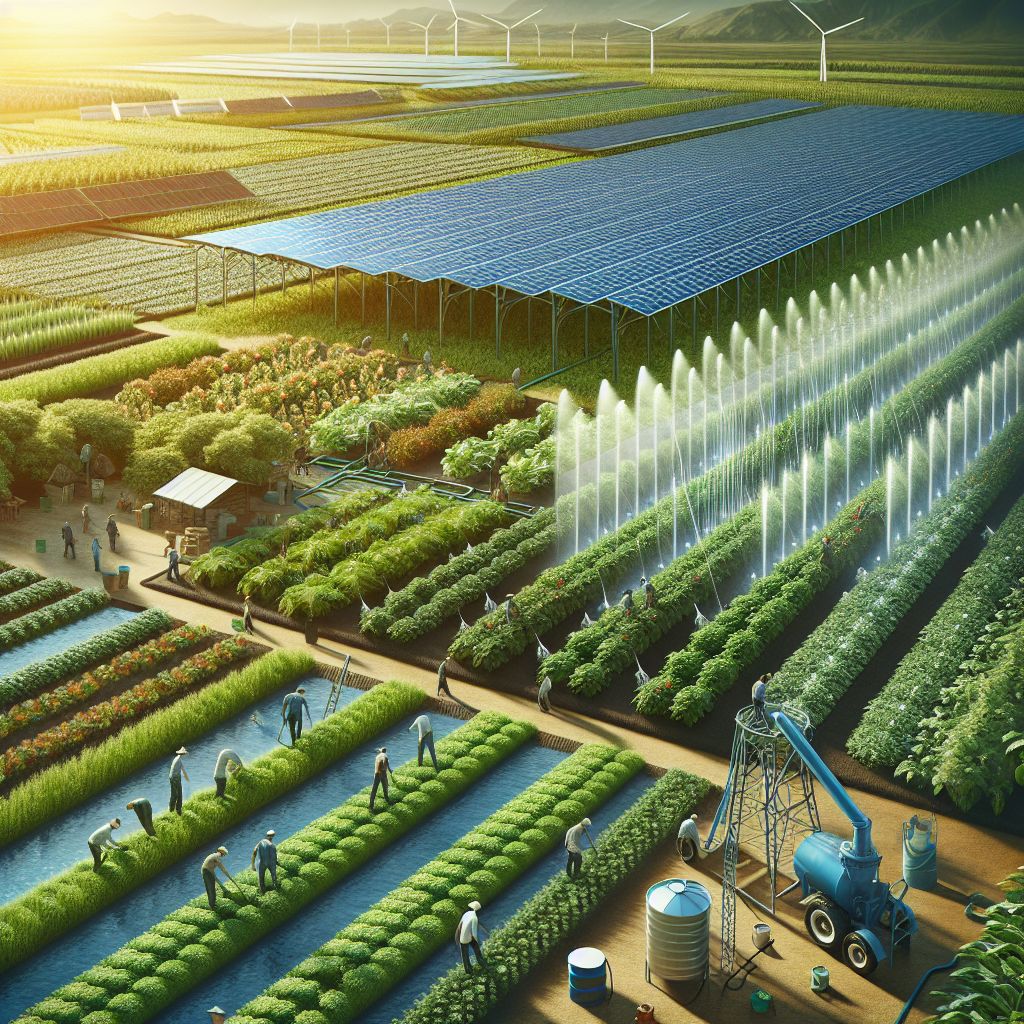
Seeding the Future: Embracing Solar Irrigation
So, you’re sold on the idea of solar irrigation. What’s next? Preparation is key. You’ll need to evaluate your farm’s unique requirements, such as the volume of water your crops need, the most effective irrigation system, and the ideal dimensions for your solar panel array.
Preparing Your Solar System for a Large-Scale Farm
Figure out your farm’s power needs for irrigation.
Take into account the crops you cultivate and their water needs.
Investigate local weather trends to identify the optimal solar panel arrangement.
Look into financing possibilities and government incentives.
Seek advice from professionals to design and implement your solar irrigation system.
When your plan is ready, it’s time to put it into action. Collaborating with local solar providers, looking into financing options, and taking advantage of government incentives can help you get your solar irrigation project off the ground.
Switching to solar irrigation is a big step towards a greener and more profitable future in farming. It’s an investment that not only makes sense for your wallet, but also for the health of our planet. With the right strategy, you can turn your farm into a beacon of efficiency and innovation.
Conclusion:
As we’ve seen, the economics of using a solar irrigation system in commercial farming are compelling. With the potential for significant long-term savings on energy costs, improved crop yields, and various available incentives, solar irrigation is a smart investment for the future of farming. It’s an approach that not only saves money but also aligns with a commitment to environmental stewardship and sustainable agricultural practices. By harnessing the power of the sun, farmers can reduce their carbon footprint, conserve water, and build a more resilient and profitable operation.
Common Questions
What is the average cost to install a solar irrigation system?
The price of setting up a solar irrigation system can range greatly, depending on things like the size of the farm, the amount of water needed, and the complexity of the system. For a smaller system, you might be looking at a starting price of around $10,000, whereas a larger commercial system could cost upwards of $100,000. However, the initial cost can often be made up for in the long run with savings on energy bills, increased crop production, and government incentives.
Are solar irrigation systems capable of supplying large-scale farming operations with enough water?
Definitely. Solar irrigation systems are scalable and can be designed to meet the water needs of large-scale farming operations. With the right planning and equipment, these systems can deliver more than enough water to keep even the largest farms properly irrigated. For an in-depth look at the economics of these systems, read about the cost-efficiency of solar-powered water systems.
Does the government provide incentives for using solar irrigation in commercial farming?
Indeed, numerous governments provide incentives for investments in renewable energy, such as solar irrigation systems. These incentives can be in the form of tax credits, rebates, or grants. The details of these incentives differ from country to country and region to region, so it is crucial to investigate the incentives in your area or seek advice from a solar energy provider who can assist you with the process.
What is the environmental effect of solar irrigation compared to conventional methods?
Compared to traditional methods, solar irrigation has a beneficial effect on the environment. It reduces dependence on fossil fuels, decreases greenhouse gas emissions, and frequently leads to more efficient water use. This can result in less water waste and a smaller environmental footprint for farming activities.







Leave a Reply